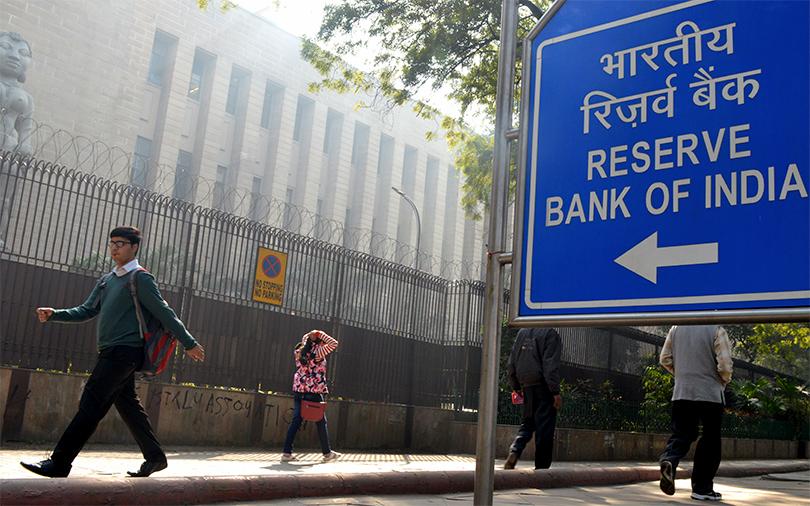After over a year of discussions, the Reserve Bank of India has finally released master directions for non-banking financial companies (NBFCs) engaged in peer-to-peer (P2P) lending. The norms, effective immediately, require all NBFC-P2Ps to apply for registration before they start or carry out the said business.
India's P2P lending market, which is predicted to be worth $4-5 billion by 2023 according to community loan exchange platform Faircent, has several players operating in the space, such as LenDenClub, Monexo, BillionLoans, i-Lend, LoanMeet, i2iFunding and FinMomenta. However, so far, P2P lending had been operating in a regulatory grey area. As such, the rollout of these guidelines gives legitimacy to the business.
While Faircent founder and CEO Rajat Gandhi feels the "guidelines will help the sector realise its potential", FinMomenta co-founder and CEO Brahma Mahesh Khaderbad believes it paves the way for P2P platforms to gain legality, transparency and credibility.
A payments industry veteran told VCCircle on the condition of anonymity, "What these P2P lending companies have been doing could have been termed illegal. They are relieved that there is an official term for the business they do, and they don’t face the threat of a shutdown."
Legal status aside, most stakeholders feel the guidelines leave a lot to be desired as far as putting the sector on the growth path is concerned.
Net-owned fund of Rs 2 crore
The RBI has said that every company seeking registration should have a net-owned fund of not less than Rs 2 crore.
Khaderbad feels this is a good move since regulatory requirements like capital will ensure that only serious players enter the business.
Vinayak Burman, managing partner at law firm Vertices Partners, agrees. He says most existing players would find it acceptable as they have built that kind of capability. "RBI is only welcoming serious players and saying we don’t want fly-by-night operators, who don't have their skin in the game."
At the same time, Burman feels the requirement could be prohibitive for early-stage startups. "This is a technology-driven business, and startups might find it tough to have Rs 2 crore as net-owned fund. Even from an angel funding perspective, it is on the higher side," he adds.
Escrow accounts
The guidelines say that any fund transfer between participants on a P2P lending platform shall be through an escrow account, which will be operated by a trustee. At least two escrow accounts, one for funds received from lenders and pending disbursal, and the other for collections from borrowers, shall be maintained. "The trustee shall mandatorily be promoted by the bank maintaining the escrow accounts," the regulator said.
The payments industry veteran cited above said this will be the biggest operational hurdle for P2P players. "While not getting into the nitty-gritty, I fail to understand why does the bank need to appoint trustees to further control that escrow account?" he asks. "It’s a digital environment... you can’t hold the flow of money. I get the trustees being nominated... but banks already have so much on their plate, what interest will they have in appointing a trustee for a client account and taking accountability of that.
Burman, however, believes no nodal account will be set up, but P2P players will be granted a 'view-only' right.
"There are multiple layers of arrangement and monitoring. Banks may have got a lot of power in the fund transfer mechanism, but I don’t see them coming in as dictators. They will be more of gatekeepers, which is good both from the governance and reputational perspectives."
Caps on lending amount
The central bank has said that the aggregate exposure of a lender to all his/her borrowers at any point, across all P2Ps, should be capped at Rs 10 lakh. The aggregate loans taken by a borrower at any point of time, across all P2Ps, has also been capped at the same amount. The exposure of a single lender to the same borrower, across all P2Ps, shall not exceed Rs 50,000.
Bhavin Patel, co-founder and CEO of LenDenClub, feels the RBI has addressed most requirements of P2P platforms by defining the payment mechanism and allowing historical data submission to credit bureaus. "There is only one hitch, regarding capping of the lender investment amount. However, I am sure the RBI will increase that cap in coming times," he says.
The payments veteran cited above feels the RBI is being "ultra-conservative" by capping an individual borrower's limit at Rs 50,000. "However, six months or a year down the line, it might increase the limit. However, sometimes tweaking the limit can also take a lot of time, pre-payment instruments being the biggest example. As long as you know who are the parties involved, why do you have to put an artificial cap?" he asks.
Dev Raj Singh, executive director, tax & regulatory services, EY India, feels the caps on the loan amount will keep the high net-worth individuals away.
Registration process
All existing and prospective NBFC-P2Ps will be required to submit an application for registration with the Department of Non-Banking Regulation, Mumbai. The bank in question, after being satisfied that all the conditions are fulfilled, will grant an in-principle approval for setting up and operating a P2P lending platform. However, the regulator has given a breather to existing players—they can apply for registration as an NBFC-P2P within three months.
Burman says the guidelines leave some ambiguities. For example, he says, one of the guidelines reads: If the company has necessary technological entrepreneurial managerial resources to offer such services to participants.
"What is the definition of ‘necessary’ and who defines ‘necessary’ become important. Will the apex bank give more details in this context?" he asks.
Another requirement states: “Public interest shall be served by the grant of certificate of registrationâ€. "What determines the jurisprudence for and towards public interest is something that can have interpretations. To what extent these ambiguities affect eligibility for a certificate of registration is something that needs attention," he asks.
Conclusion
Things might be tougher for new players than for the existing ones, feels Burman. "All these stringencies, and the fact that general NBFC-oriented regulations have been chalked out for P2P lenders, mean these regulations will be a basic litmus test for financial capability. Existing players should be able to meet most of these requirements, even though they may not be very happy with limitations that have come into play from a business operations perspective, which will affect the bottom line in the long term," Burman says.
Besides, there is absence of clarity on some key issues, such as the information exchange-and-control mechanism to limit lender and borrower caps.
The payments industry veteran cited above feels that certain requirements, such as directors on the board, are the same as those for banks and NBFCs. "Fin-tech is a different animal, but you expect it to behave the same way as NBFCs and banks... Some of these fundamental issues can become hurdles to growth."
Besides, he points out, P2P players are required to obtain prior bank approval for share allotment, which will take the aggregate holding of an individual/group to 26% and more of the paid-up capital of the NBFC-P2P. "With so many restrictions, will they really want to do it?" he further asks.
Some of these issues may eventually get resolved, but they can slow down the sector's growth. "You have built a highway but with speed-breakers in the wrong places. Eventually, when you see accidents, you will remove them and put them somewhere else. Some of the things could have been avoided, but this is a regular process with the RBI," he says candidly.






